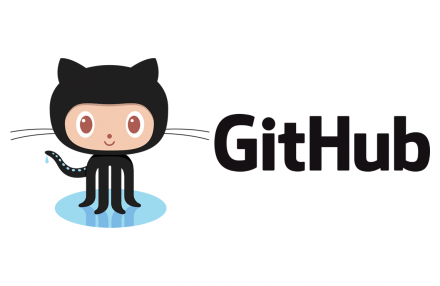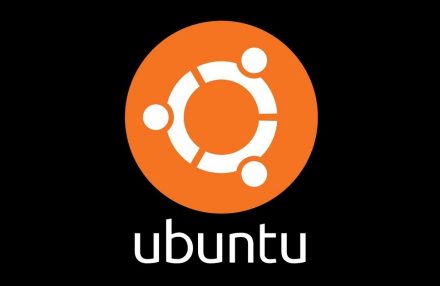Cloud resources
Server-based infrastructure
A virtural machine with OS (typically Linux or Windows)
| Infrastructure-as-a-Service | Google Compute Engine |

AWS Elastic Compute Cloud |
| Database servers |  Google Cloud SQL Google Cloud SQL |
 AWS Relational Database Service (RDS) AWS Relational Database Service (RDS) |
| Containers on servers |  Google Container Registry (gcr.io) Google Container Registry (gcr.io) |
 AWS Elastic Container Registry (ecr.io) AWS Elastic Container Registry (ecr.io) |
Serverless applications
You don’t see server that run your application, you only need to focus on developing your app. No machines or networks exposed to the developer (hidden), no need to care about infrastructure engineering, more secure since no machine/network to secure.
| Serverless platforms |  Google App Engine Google App Engine |
 AWS Elastic Beanstalk AWS Elastic Beanstalk |
| Serverless functions |  Google Cloud Functions Google Cloud Functions |
 AWS Lambda AWS Lambda |
Services and APIs
Fully-managed services that your application can use.
| Storage (via “bucket”) |
 Google Cloud Storage Google Cloud Storage |
|
| Databases (NoSQL) |  Google Cloud Datastore Google Cloud Datastore |
|
| Data warehouses |  Google BigQuery Google BigQuery |
 AWS Athena AWS Athena |
| Logging |  Google Cloud Stackdriver Google Cloud Stackdriver |
Cloud security
Legacy security in the cloud
Traditional server-based security, like Unix/Windows account and permission, ssh keys, firewall rules.
SSH
ssh -i id_rsa <EXTERNAL_IP_ADDRESS>
SQL databases
postgresql://<db_user>:<db_password>@<IPAddress>:5432/<db_name>
Firewall rules
similar to Linux iptables, but defined at project-level
ingress (incoming traffic) vs egress (outgoing traffic) with Address ranges of sources/destinations
Cloud platform security (via IAM)
IAM (Identity and Access Management), use for controlling/managing creation and access to cloud resources.
Identity (Authentication)
Validating users and applications
gcloud auth print-identity-token
Access Management (Authorization)
Policies attached to users or accounts that determine Which actions are allowed on which objects.
gcloud auth print-access-token
Types of access management policies
Discretionary Access Control, object owner decides
Mandatory Access Control, System or admin decides
Role-Based Access Control (RBAC), system decide based on user role
Apply principle of least privilege, apply minimal level of access to user need for tasks
Identity-based policies
Determine who can do what action to which resource
Assigned to pre-defined roles with sets of permissions
Identity: user account, service account, group account, app domain
Roles: Owner, Editor, Reader, Billing Administrator, IT team
Resource: VMs, Database instances, Storage bucket
Service accounts: Used to authorize machines and applications, VM run associated with service account’s role
Service account keys, used to authenticate (a JSON file projectID-87cca44abcc79.json)
Identity tokens
gcloud auth activate-service-account –key-file=key.json
Metadata server: Each VM instance contains an internal web server storing instance details
GCP Commands
gcloud <subcommand>
gsutil <subcommand>
Set Cloud Platform project in a shell session
gcloud config set project <PROJECT_ID>Activate the service account, application needs to access cloud platform resources
gcloud auth activate-service-account --key-file=start/a2-access.jsonGet Service account identity token (OAuth2 tokens), Temporary credentials associated with account, instead of using key.json file
gcloud auth print-identity-tokenGet Service account access token (allow access to certain server resources)
gcloud auth print-access-token
Compute Engine examples
List instances
gcloud compute instances listCreate instances
gcloud compute instances create myinstanceGet more information on the running instance:
gcloud compute instances describe <instance>
Cloud Storage examples
List buckets
gsutil ls
gsutil ls gs://<bucket>Create bucket (gs:// URI)
gsutil mb gs://<bucket>List the bucket’s contents
gsutil ls gs://[bucket-name]Download the secret file, to current folder
gsutil cp gs://[bucket-name]/secret.txt .
List the logs on the project:
gcloud logging logs listRead stackdriver logs
gcloud logging read projects/thunder-ctf-cs494/logs/transactions
List the cloud functions in the project:
gcloud functions listGet info about function
gcloud functions describe a3-func-954431986661Read the cloud function related logs
gcloud functions logs readModify cloud function’s code
gcloud functions deploy [function-name] --source=[path/to/code]
AWS Commands
Use private key to logs in to EC2 (VM) instance:
ssh -i ec2-ssh.pem ec2-user@<PUBLIC_IP4_ADDRESS> Linux AMI
ssh -i ec2-ssh.pem ubuntu@<PUBLIC_IP4_ADDRESS> UbuntuLog into SQL databases:
postgresql://<db_user>:<db_password>@<IPAddress>:5432/<db_name>To add credentials for an IAM user as a profile:
aws configure --profile <profile-name>AWS Resource Names (ARN)
arn:partition:service:region:account:resource
Listing bucket (need to activate profiles at the end)
aws s3 ls s3://<bucket-name> --profile <profile-name>Copy all files in bucket
aws s3 sync s3://<bucket-name> <local/path> --profile <profile-name>Copy specific file from bucket (with anonymous request)
aws s3 cp --no-sign-request s3://<bucket-name>/file.txt .List the Lambda functions
aws lambda list-functions --profile <profile>Invoke Lambda function
aws lambda invoke --function-name <function> ./out.txt --profile <profile>List the IAM policies that are attached to a function
aws lambda get-policy --function-name <function> --profile <profile>
List all EC2 instances a use can access
aws ec2 describe-instances --profile <profile>
List AWS RDS instances
aws rds describe-db-instances --region us-east-1
AWS Security Token Service (STS), see what roles associate with the profile
aws sts get-caller-identity --profile <profile>Show Snapshots (EC2 VM image) that an account ID can access
aws ec2 describe-snapshots --owner-id <AWS_Account_ID> --profile <profile>
aws ec2 describe-snapshots --profile <profile>Create volumen (Copy Snapshot)
aws ec2 create-volume --availability-zone us-east-1a --region us-east-1 --snapshot-id <SnapshotId> --profile <AccountProfile>
Get IAM information
aws iam get-user --profile <profile>Get role policy informaition
aws iam get-role --role-name <role> --profile <profile>List user policy
aws iam list-attached-user-policies --user-name <username> --profile <profile>Get policy information
aws iam get-policy --policy-arn <PolicyArn> --profile <profile>Get permission information given to the policy
aws iam get-policy-version --policy-arn <PolicyArn> --version-id <DefaultVersionId> --profile <profile>
Get API stage
aws apigateway get-stages --rest-api-id "s33ppypa75" --profile <profile>Elastic Load balancer
aws elbv2 describe-load-balancers --profile <profile>
List container image from Elastic Container Registry repository
aws ecr list-images --repository-name <image-name> --region us-east-1 --profile <profile>Show image information from the Elastic Container Registry service
aws ecr batch-get-image --profile level1 --repository-name level2 --registry-id 653711331788 --region us-east-1 --image-ids imageTag=latest












